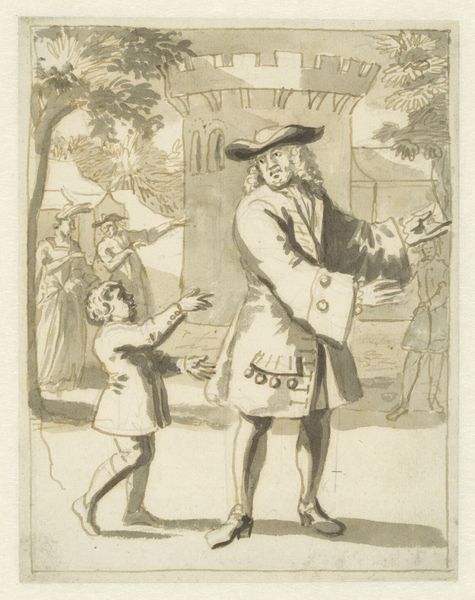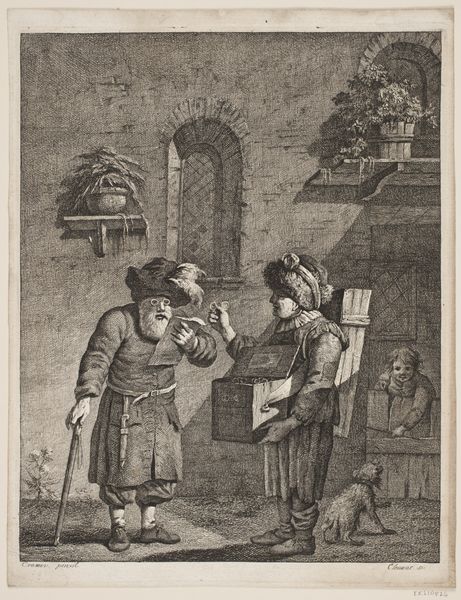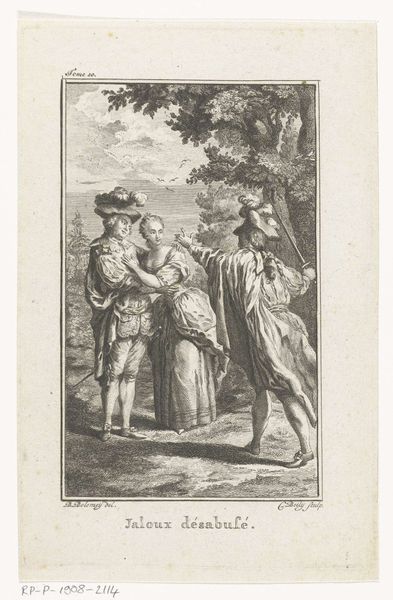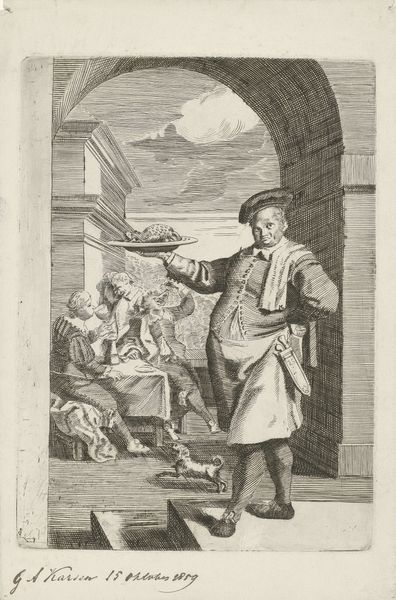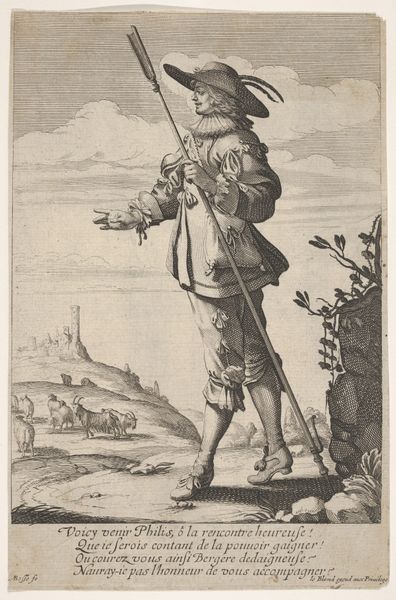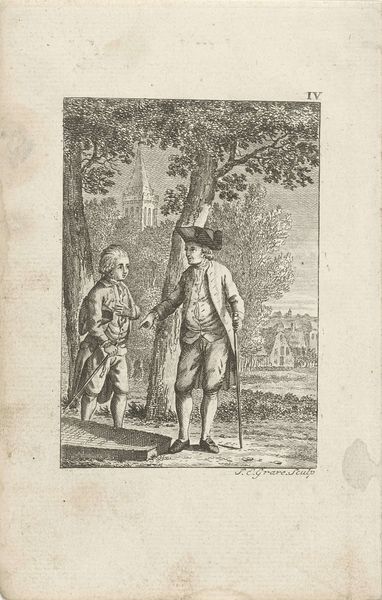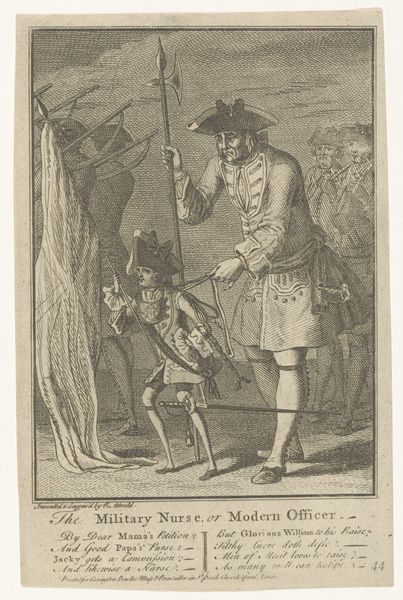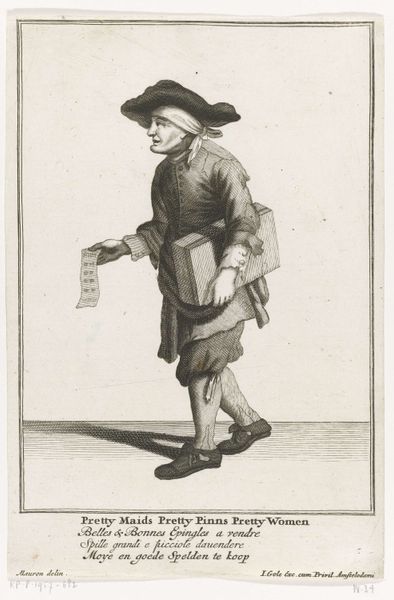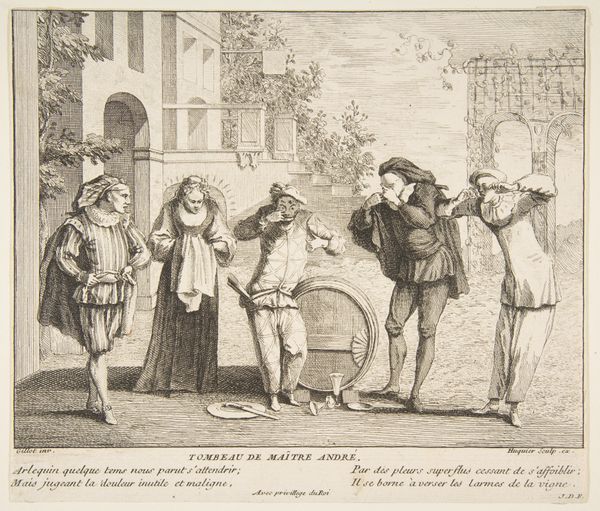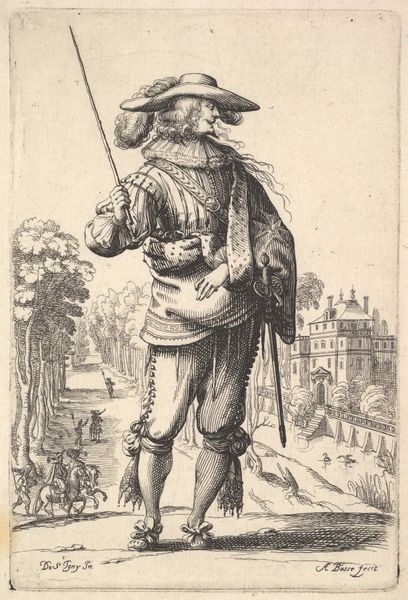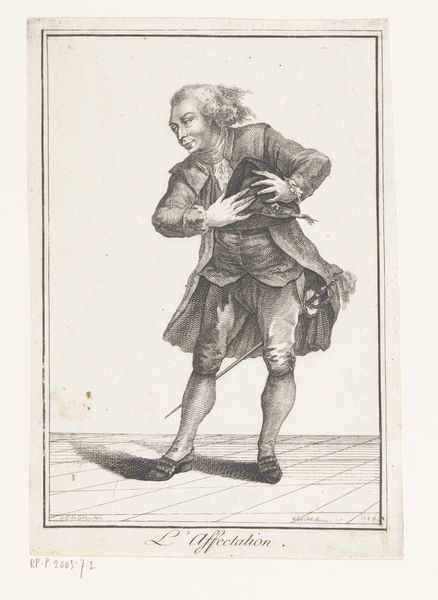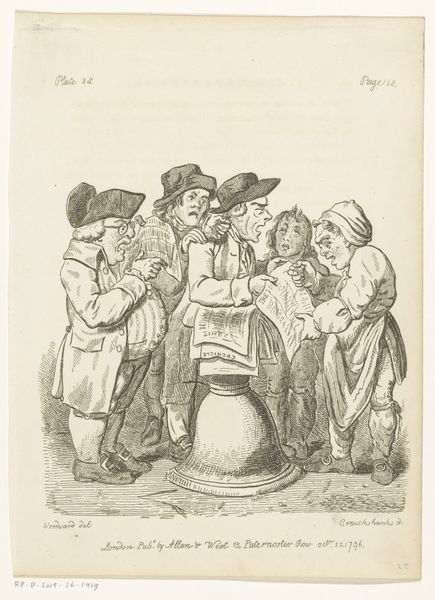
print, engraving
#
portrait
#
dutch-golden-age
# print
#
caricature
#
traditional media
#
caricature
#
line
#
genre-painting
#
engraving
Dimensions: height 162 mm, width 129 mm
Copyright: Rijks Museum: Open Domain
Curator: I find myself quite charmed by this engraving, dating from somewhere between 1675 and 1737. The Rijksmuseum calls it "De brieven besteller" – The Letter Carrier. It's attributed to Pieter van den Berge, capturing a peculiar little street scene. What do you make of it? Editor: Immediately, it feels theatrical. Almost like a stage setting with the large letter carrier looming like a somewhat oversized prop, next to what could be part of some ancient ramparts. It’s the texture and contrast I am interested in, the product of those carved lines. Curator: Precisely! There's a story unfolding right before us. You notice the lines of the engraving, each etched mark carefully placed, and look at that grand tower in the background adding a touch of antiquated romanticism against an almost farcical moment. I’d venture to say that its presence is more evocative than structural; its physical representation only secondary. Editor: See, and I am immediately pulled toward how such engravings were circulated. Considering the print medium here and the time period, I am reminded of a kind of early news media. It offers a fascinating window into 17th century methods of distributing images, labor divisions and visual consumption within Dutch society. Curator: That interplay between art and commerce is ever present isn’t it? And still, beyond its socio-economic role, this scene whispers of universal experiences—of expectations unmet, small hopes realized. Do you think that young boy eagerly reaching toward the carrier understands that aspect of his life, of how transient that moment really is, of how it may shape the future? The open mouthed expression seems to promise joy and glee! Editor: Maybe, maybe not. Though I will concede it certainly provides insights into dressmaking trades. Observe, for instance, the material used, or what appears to be a deliberate focus on detailing certain pleats. Are they just there for aesthetic reason? No. Every button has been rendered; and not just with its aesthetic attributes. Even the messenger's uniform signifies the work itself and all that it involved... his literal 'delivery'. Curator: That's fascinating! I’d been absorbed in this feeling, this story of the human interaction playing out, but the clothes themselves become narrative aids. What if that’s the real treasure here – that, the convergence of craft and narrative woven, quite literally, together. Editor: Indeed, making 'the personal' more like, let's say, 'the laboriously constructed'! This makes us rethink just who and what truly shapes meaning.
Comments
No comments
Be the first to comment and join the conversation on the ultimate creative platform.
